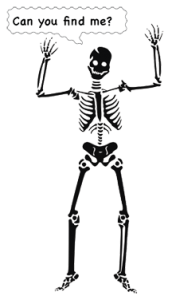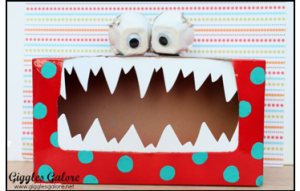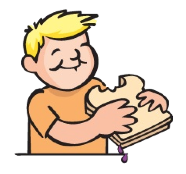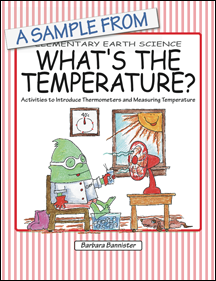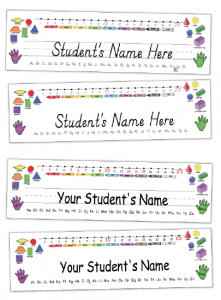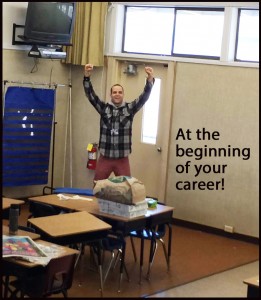Establishing clear procedures is key to a successful classroom. Every class of students is a bit different so having a variety of options for this will give you an advantage as you support your students learning. Here are resources I think you might find useful as you collect options for setting up routines and procedures: Dr. Fred Jones - proactive versus reactive management Scholastic – check out the narrated slideshows with images of a variety of great suggestions! Fern Smith – she uses a “Yes Line” to get students from place to place Denise Young – a quick checklist of what and when This …
You might be surprised at what has been stored in bins, boxes, and closets from past science adoptions. It takes a bit of snooping and a willingness to sort through supplies that might be unfamiliar to you. I am amazed at the materials I have collected for my science class! The title of the post is a reference to an actual skeleton we found in a box. A bit of wire (unbent paper clip) and a cleaning and it was a great greeting when students came into our classroom! If you find supplies that may not be familiar to you, check with colleagues, the company online, …
It’s the first day of a school year or the first day with a new group of students. Routines aren’t set, classes like music or PE haven’t started, and you don’t want to spend every minute explaining expectations. What to do with this initial time that’s provides you with information about your students, gives them a chance to be creative, and begins the process of building a team in your classroom? Have your students make people to be posted on the wall. Maybe up high, above your bulletin board? You have a chance to talk to students as they decorate their person. You might have …
Do you have students who aren’t clear about the difference between reporting and tattling? Is tattling driving you and your students crazy!! I searched for resources you could consider using in your classroom to help students understand the difference between being safe and getting a classmate in trouble. I also found forms and created a couple more that you could use or adapt for your classroom. I tried to make a primary form that doesn’t require words and a form from students who are able to describe the situation in writing. Let me know if you have suggestions for modifying …
Who doesn’t need more time? There are many ways to integrate science and writing. Obviously, read and answer questions. OK, describe how to do an experiment and write an analysis of the results. Sure, but can science be used to encourage reluctant writers? You bet it can! I’ve had more than one student tell me they’re working to be better at math and writing because that’s what scientists do. Some students respond when there’s a reason to write clearly and solve math problems correctly. Here’s a few suggestions for integrating writing and science: Writing Clear Directions for making a peanut butter and …
Is your day just too short for science? Busy teaching reading, writing, and math and feeling a bit guilty because there are other subjects you want to teach but that dismissal bell keeps ringing too soon? Consider ways to integrate math and science. Students practice their math skills and you have a few more minutes each week for science. Students see the connection between math and science. Seem simple? It can be with some planning. Here are suggestions, with resources, that can get you started. Graphing – Oh Deer! Line graphs - temperature change Bar graphs - precipitation Symmetry - light reflecting using mirrors Angles and measurement …
Oops, I forgot to post about desk tags after the “It’s Just the ABCs“ post. These desk tags are FREE or a few dollars. The free desk tags feature colors, two-dimensional and three-dimensional shapes, a number line, an alphabet, and left and right hands. Choose from the Century Gothic font or the D’Nealian font. The desk tags that are a few dollars have been saved in a Wordâ„¢ document so you copy and paste your class list into the document. Every name is placed on a desk tag. No need to write each student’s name. It’s great if you have a new student …
A science lesson doesn’t have to take 40 minutes or even several sessions of 40 minutes. It needs to be focused on the science you’re presenting, be interesting, and, of course, be fun! I’m teaching inertia and gravity in a fifth grade classroom. Between my 40 minute classes I want to keep students interested and talking about the topic. I could use a few short demonstrations to review or reinforce inertia and gravity. Do you have a meter stick? Try this Center of Gravity demonstration. Do you have a large glob of clay to add to the meter stick? Try this Balancing …
Are you putting the ABCs on the wall or maybe on student desk tags? If you’re putting it on the wall, find the middle of the wall, put up the letter “M”, and then add the rest of the alphabet A-L and N-Z. By starting in the middle of your wall with the middle letter in the alphabet, you won’t have to measure where to start the alphabet with the letter “A”. Do you need a simple alphabet to get you started? Here’s a one that’s FREE. I chose the Century Gothic font with black, blue, cian (light blue), green, pink, red, white, or …
You tried many different jobs working with children and it seemed to fit what you wanted to do with your life. You found a university program,worked with great people, did your student teaching, and now – drum roll please – you’re a teacher! You have your very own classroom and your very own students. You might need a few of the nitty, gritty details about teaching.  I hope, with this blog, to share with you some of those details, some of the wisdom others very generously shared with me during my long, long teaching career. Please ask questions, share your stories, and impart your …


